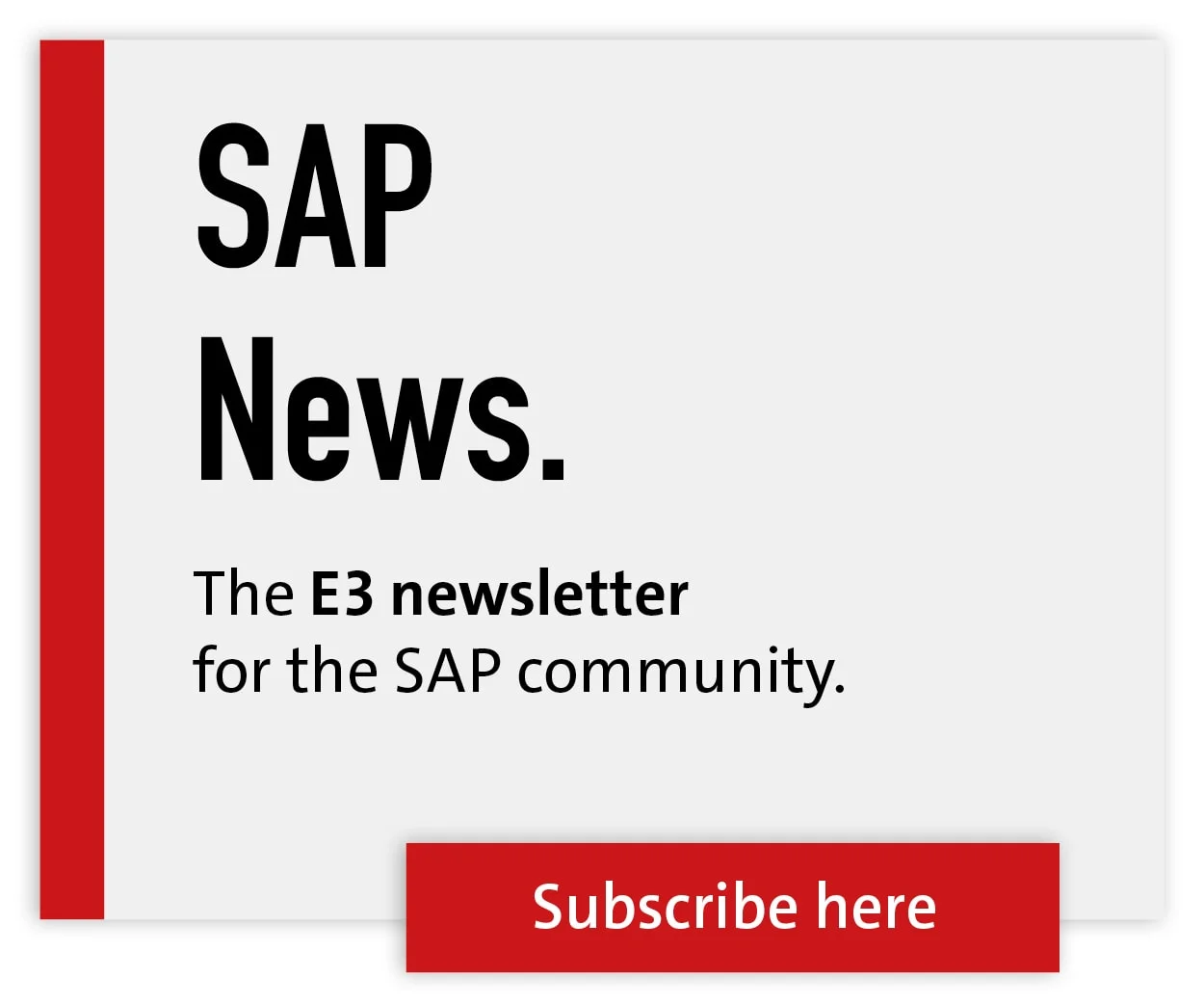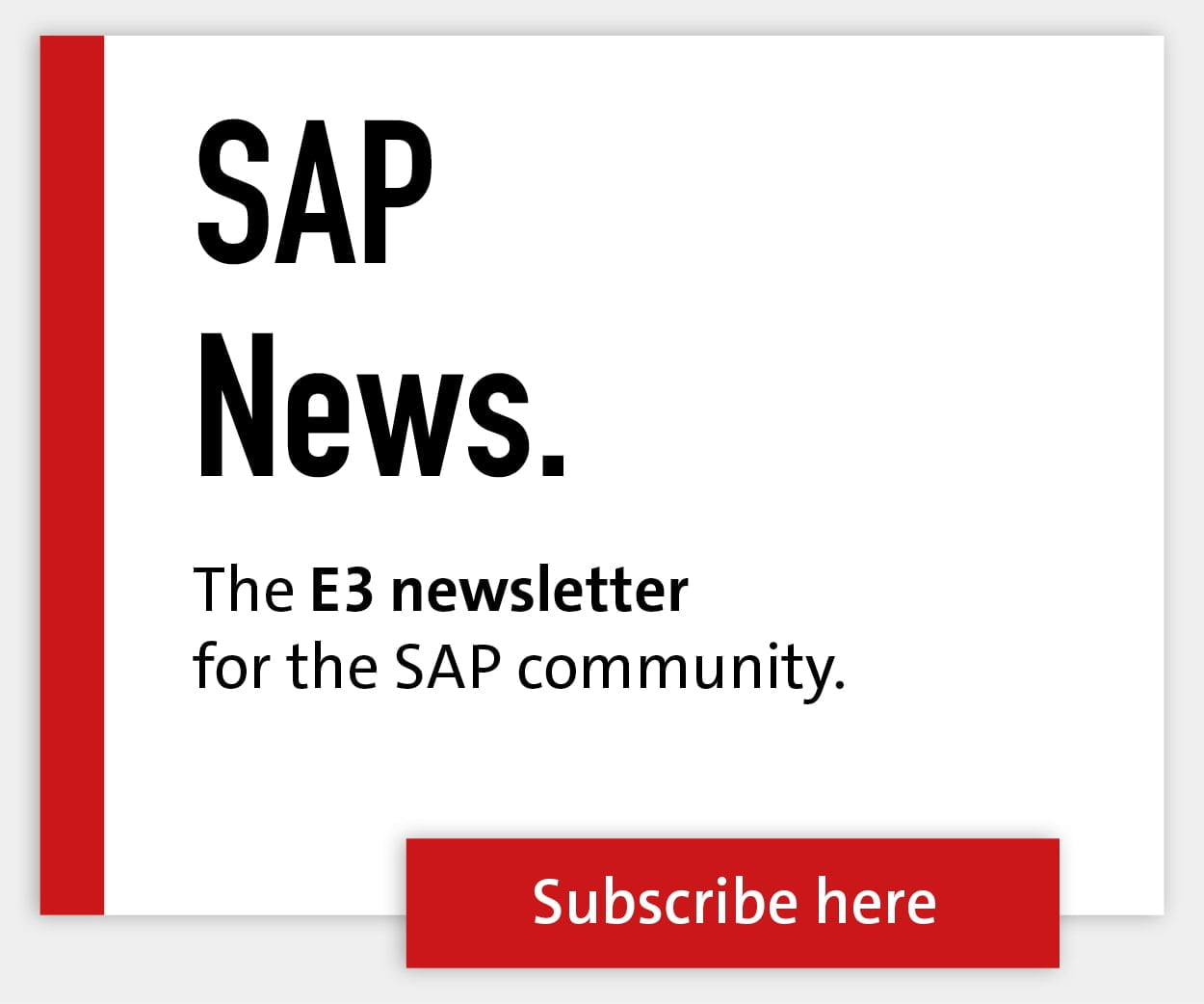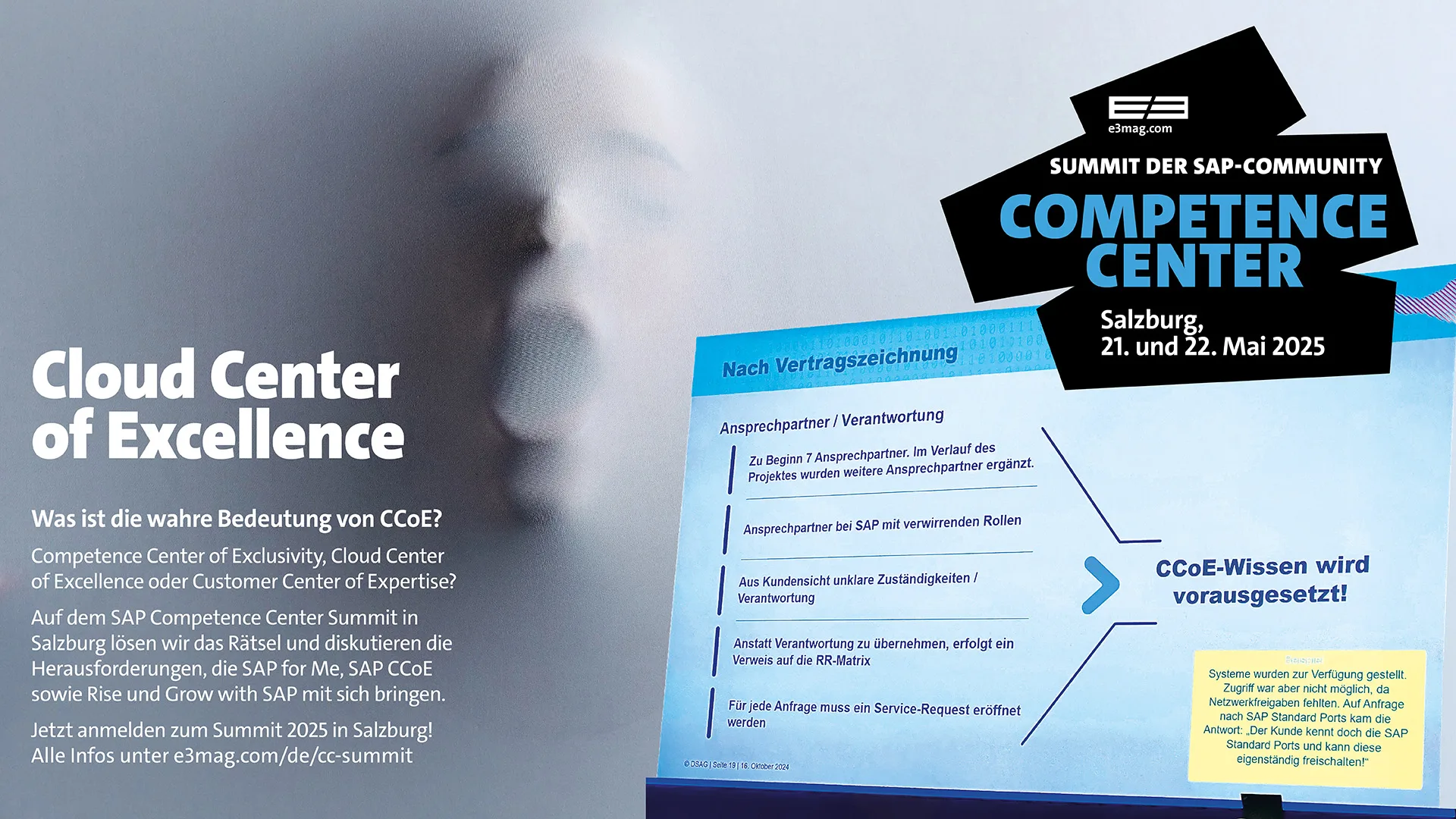S/4 Hana: Paving the way for intelligent companies


Analysts from market researchers such as Gartner, Deloitte, EY and PwC predict that disruptions in the global supply chain due to changes in trends or market turbulence of a geopolitical, ecological, social or competitive nature will be the order of the day in the future. To meet these challenges effectively, the S/4 Hana migration is a decisive step, as it represents the transition to a future-oriented ERP system and thus paves the way for technological innovation.
This new evolutionary stage in the business management system landscape not only enables end-to-end transparency across the entire supply chain, but also uses innovative, digital solutions to help identify and assess risks along the entire value chain and make them transparent and controllable. This enables companies to achieve the optimum balance between responsiveness and delivery capability, inventories, lead times, sustainability (circular economy) and customer satisfaction.
In principle, a switch to S/4 Hana is not a standardized process, but is rather determined by the individual requirements and needs of the company.
Migration options
You can choose between Brownfield, Greenfield and Crossfield.
BrownfieldThe system conversion does not sound very innovative at first and is seen by management in particular as a missed opportunity to standardize processes. However, it does not have to be carried out as a purely technical release change. If you want more, you should take a look at Consilio's Beyond Brownfield method. For example, it removes superfluous legacy data - such as enhancements and modifications that are no longer necessary - or archives master and transaction data. This preserves investments made in the SAP software and provides competitive advantages for the company. This approach concentrates on processes that actually require action. In this way, the available budget is used in a targeted manner for innovations and the really important processes.
GreenfieldThis path describes a complete new implementation of S/4 Hana. As a rule, all processes, organizational structures, customizations, etc. are reconfigured on the basis of SAP best practices. The greenfield approach therefore offers companies the opportunity to avoid outdated processes and inefficient adjustments to the system right from the start. The greenfield approach requires extensive planning and can take more time and resources than the other transformation paths.
CrossfieldThis method is of interest to all customers who are interested in selectively restructuring their processes - for example, if the finance area is to be restructured on the basis of SAP best practices. A mix of brownfield and greenfield is possible here, which allows a gradual S/4 conversion of individual areas. It is also possible to selectively transfer master and transaction data and make more extensive changes than with the brownfield approach. To summarize: The aim of the crossfield method is to transfer proven components of the legacy system to S/4 and to replace obsolete and inflexible components and processes that cannot be further optimized with new ones. The user thus secures his investments and creates space for new innovations - according to his individual requirements.
Once a company has made its decision, it must take the next hurdle and decide on a suitable hosting method. SAP currently offers two paths for migrating to S/4 Hana: the tried-and-tested in-house data center (on-premises) or the cloud in the "private" or "public" versions. However, it should be noted that not all migration paths harmonize with all deployments (hostings). The following combinations are currently possible.
On-prem: The classic
Long-standing existing SAP customers operate their company system in this way - which is why many user companies consider this deployment method. The user has all the options available for the changeover.
Cloud: the modern version
As SAP announced, the company is focusing on the cloud. This means that while the on-premises versions will continue to undergo further functional development, innovations - such as AI-based solutions, Green Ledger environmental reporting or larger functional areas and enhancements on the Business Technology Platform (BTP) - will primarily be available to SAP cloud customers. Anyone who wants to benefit from this must therefore switch to the cloud. SAP offers the S/4 Cloud in two contract models: Grow with SAP and Rise with SAP. For users who are not yet using ERP or want to switch to SAP, Grow with SAP is an option. This cloud variant offers a high degree of standardization and has a fixed range of functions. This makes it less suitable for companies that operate in niche areas, have very specific processes or are subject to exceptional legal regulations, for example.
Interested SAP user companies should bear in mind that it is not possible to take processes from a legacy system with this solution. The focus here is on the Fiori user interface, which enables intuitive operation of the system. Grow with SAP offers the ideal start in the SAP ERP world and is specially designed for growing companies to ensure maximum flexibility in the S/4 Cloud.
If you don't want to do without the functional scope of your on-premises system, but want to take your ERP system to a new level with the help of the cloud, you should take a look at Rise with SAP in the private cloud. This means that this variant of S/4 Hana not only includes the entire functional scope of the S/4 Hana on-premises solution, but unlike the public cloud, users can also decide in which region their system is hosted or which transformation path (brown-, cross- and greenfield) they want to take. As Rise with SAP Private Cloud largely corresponds to the on-premises version, this edition also offers the use of the modernized SAP GUI in addition to the Fiori interface, and customizing and in-house developments are still possible to the same extent. This approach is an alternative for existing SAP customers in particular, allowing them to take advantage of the cloud benefits.
Cloud vs. on-premises: Innovations - such as AI-based solutions like Green Ledger environmental reporting or larger functional areas and enhancements on BTP - will only be available to SAP cloud customers in future.
Conclusion
Confronted with the options for deploying S/4, those responsible are faced with a difficult decision. Competent SAP partners such as Consilio use their assessment tools to clarify which path is the best fit, as there are many options. These analyses not only include information on the system architecture, but also holistic factors such as human resources.
For organizations that want quick, easy and therefore cost-effective implementation and management, SAP comes up trumps with solutions such as Grow. Companies with complex and individual requirements and those who want to upgrade from an already well-established older SAP environment and are unwilling to relinquish control of their data are best served by Rise with SAP Private Cloud. Due to SAP's strategic orientation, S/4 on-premises is not an option in the long term, as SAP intends to provide future innovations primarily for the cloud variants.

To the partner entry:









